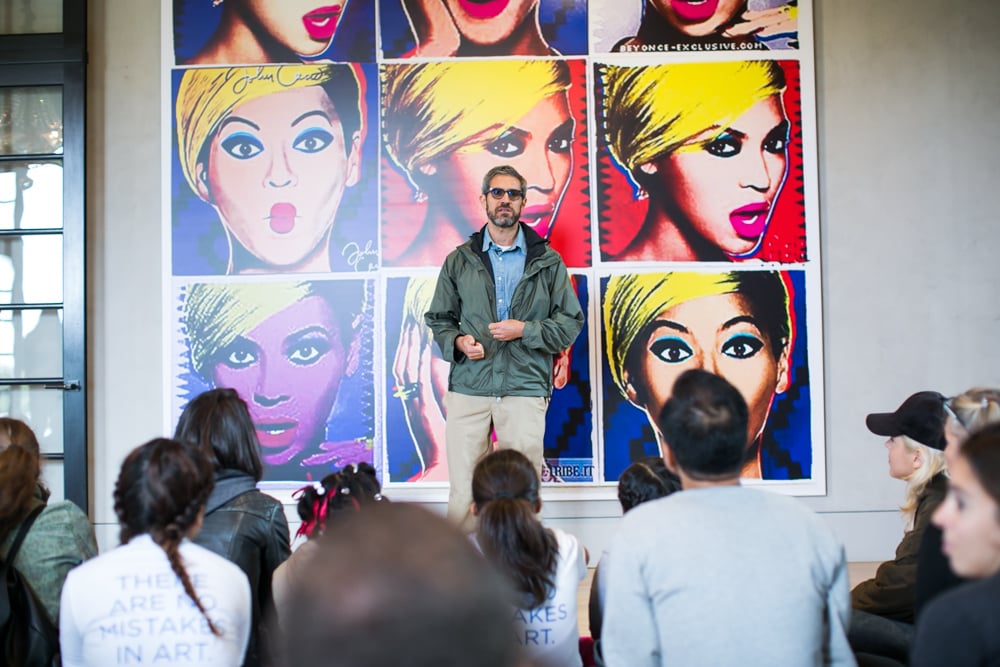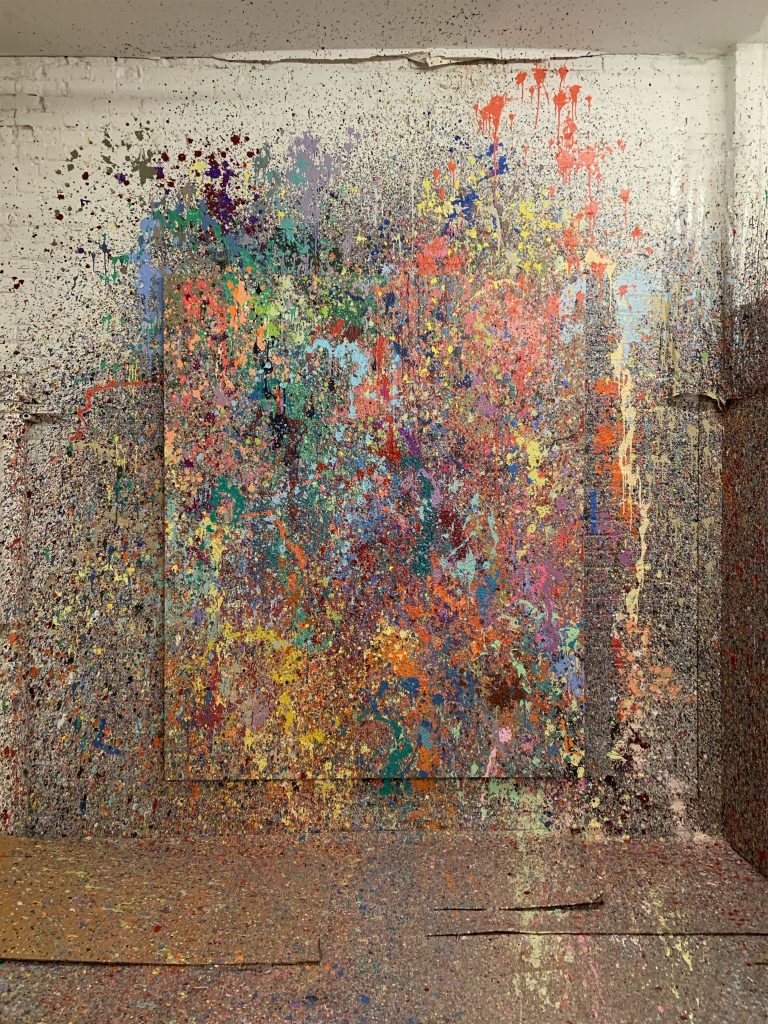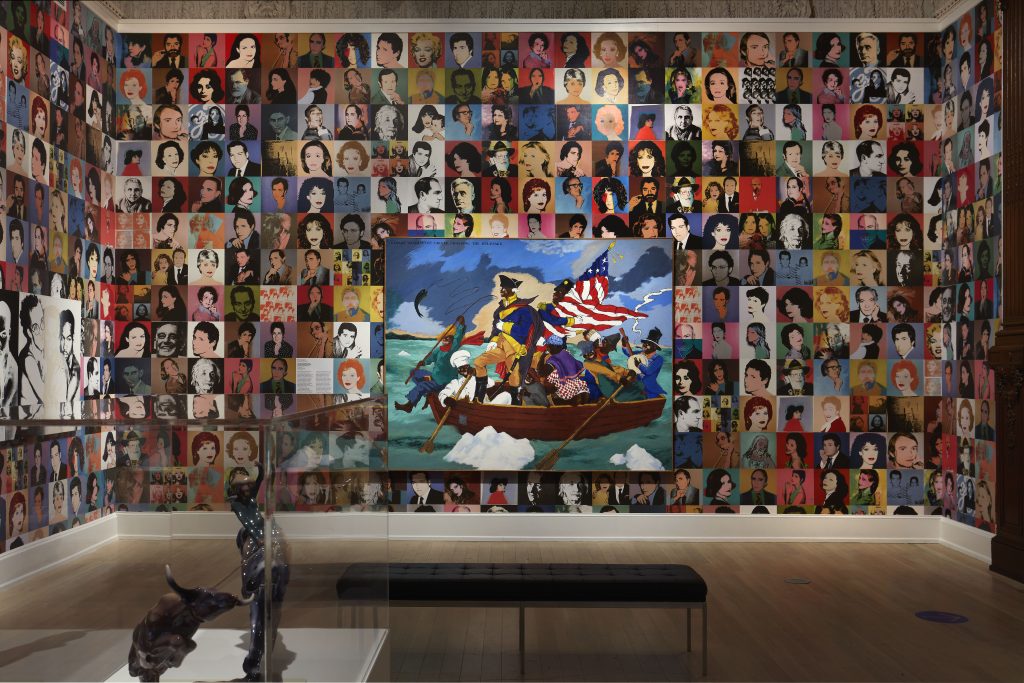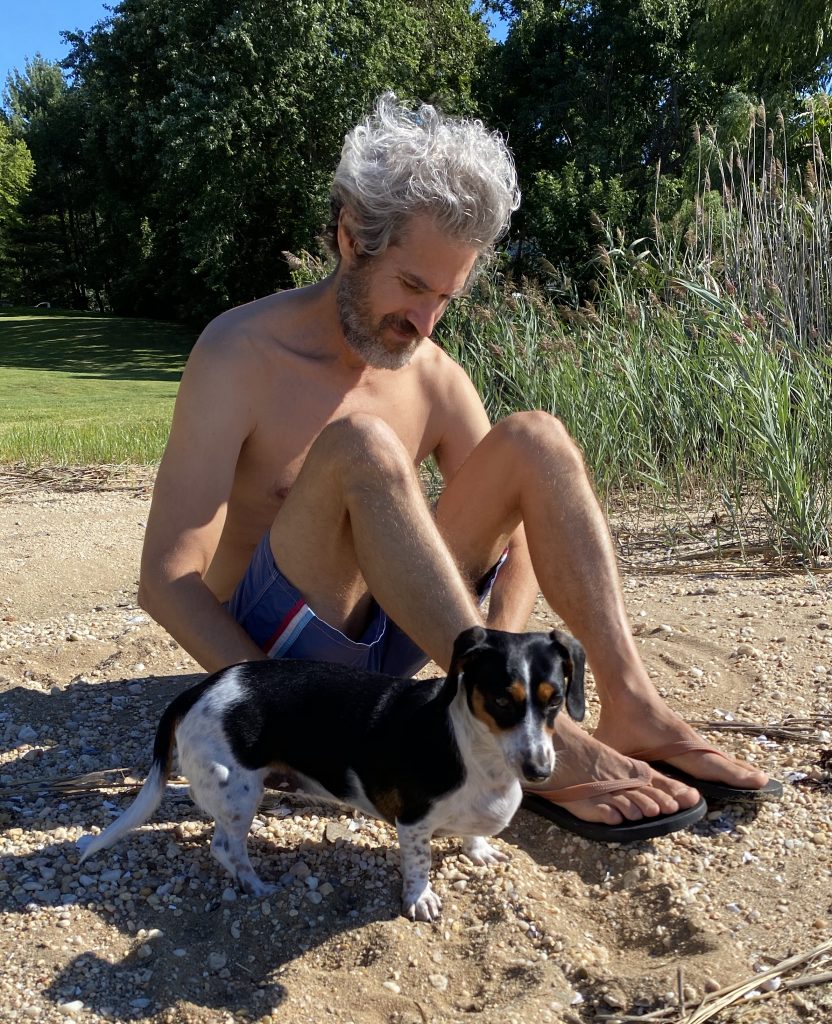People
Studio Visit: Jonathan Horowitz on His Secret Instagram Art Project, and the Joys of Flinging Paint as a Creative Release
The paint throwing is also part of an ongoing series of abstract paintings.

The paint throwing is also part of an ongoing series of abstract paintings.

Artnet News

Jonathan Horowitz’s art has long turned a critical eye toward American politics, but it took on new urgency in the Trump era. His altered photographic image of the former president golfing into a fiery hellscape became an instant symbol of our apocalyptic political era, with critic Jerry Saltz suggesting it become Trump’s “official presidential portrait to hang in all federal buildings, courthouses, and post offices.”
Most recently, Horowitz organized a timely exhibition at the Jewish Museum, titled “We Fight to Build a Free World” (through February 14), which looks at artistic responses to authoritarianism, anti-Semitism, and racism throughout history, including work by artists such as Kara Walker, Judith Bernstein, and Glenn Ligon.
We spoke with Horowitz about how he stays motivated in the studio, the emotional impact of Biden and Harris’s recent speeches, and his secret new Instagram project.
What are the most indispensable items in your studio and why?
A sea of containers with leftover paint from other artists’ studios. For the last few years, I’ve been making these paintings called “Leftover Paint Abstractions.” I always keep one going while I’m working on other projects. The way they’re made is I stretch a support with raw linen and throw leftover paint in the middle of it. After the paint dries, I throw some more. The canvas becomes like a landfill.

Jonathan Horowitz, an in-progress “Leftover Paint Abstraction.” Courtesy of Jonathan Horowitz.
What is the studio task on your agenda tomorrow that you are most looking forward to?
It’s not one particular thing. I look forward to just being there, working. I start with a list in the morning and jump around between projects, organizing things, writing e-mails—like now, to you.
What kind of atmosphere do you prefer when you work? Do you listen to music or podcasts, or do you prefer silence? Why?
I usually listen to music. I just discovered the flautist Bobbi Humphrey—I love her version of “Satin Doll.” She led me to the Mizell Brothers, who produced three of her records. The record they did with Johnny Hammond, Gears, is highly enjoyable. Sometimes, though, I do prefer silence. When I’m editing video, that’s of course necessary. But other days, I’m too stuck in my head for music. It’s not always the best place to be.
What trait do you most admire in a work of art? What trait do you most despise?
I don’t look for things in art; I hope to find things—things I don’t know or expect. What I generally don’t like is art that deliberately tries to scramble meaning, trying to get the viewer to ponder the artist’s genius. It’s a cheap trick.

Installation view of “We Fight to Build a Free World: An Exhibition by Jonathan Horowitz.” Photo by Thomas Müller, courtesy of the Jewish Museum.
What snack food could your studio not function without?
I’m not a big snacker, but I drink endless glasses of water.
Who are your favorite artists, curators, or other thinkers to follow on social media right now?
I don’t look at social media much. My participation is mostly one sided, posting images. For the past four years I had an Instagram project called Daily Trumpet (@dailytrumpet). Every day, I posted an image sent to me by a different invited artist addressing the decline of American civilization and democracy under Donald Trump. It started on the first day of his presidency and ended on the last. I contacted thousands of artists in order to keep it going; I can’t believe I got through it. I didn’t miss a single day.
And then, on the complete opposite end of the spectrum, I have another, secret Instagram project—I guess it won’t be secret anymore—@picturesofdolls. It consists of photos I take at estate sales, mostly on Long Island, of dolls, stuffed animals, and figurines.
When you feel stuck in the studio, what do you do to get un-stuck?
Throw paint at a canvas.
What is the last exhibition you saw (virtual or otherwise) that made an impression on you?
Not exactly an exhibition, but Biden and Harris’s address at the memorial for the 400,000 people who died from coronavirus. It made me realize the trauma of there having thus far been no collective national mourning, or even acknowledgment of the tragedy.

Jonathan Horowitz. Photo by Rob Pruitt, courtesy of Rob Pruitt.
If you had to put together a mood board, what would be on it right now?
A picture of my significant other, Rob, and our dog Gilda. They got me through the year.